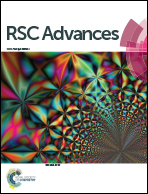PVDF-supported graphene foam as a robust current collector for lithium metal anodes†
Abstract
Lithium metal batteries have drawn much attention due to their ultrahigh energy density. However, the safety hazards and limited lifetime caused by severe lithium dendrite growth during cycling hinder their real application. To address this issue and improve the electrochemical performance of current lithium batteries, a current collector beyond the traditional copper foil for lithium anodes is highly needed. We proposed and prepared a PVDF-supported graphene foam (PSGF) structure as an effective current collector for lithium metal anodes. Because of its structural stability, large surface area, and lithiophilic surface chemistry, the corresponding lithium metal anode (PSGF@Li) shows an extended cycling life (∼1000 h), a decreased voltage hysteresis (∼80 mV) and an improved coulombic efficiency (∼99%). Furthermore, the practical application of the PSGF@Li anode in a full cell system was also demonstrated.



 Please wait while we load your content...
Please wait while we load your content...